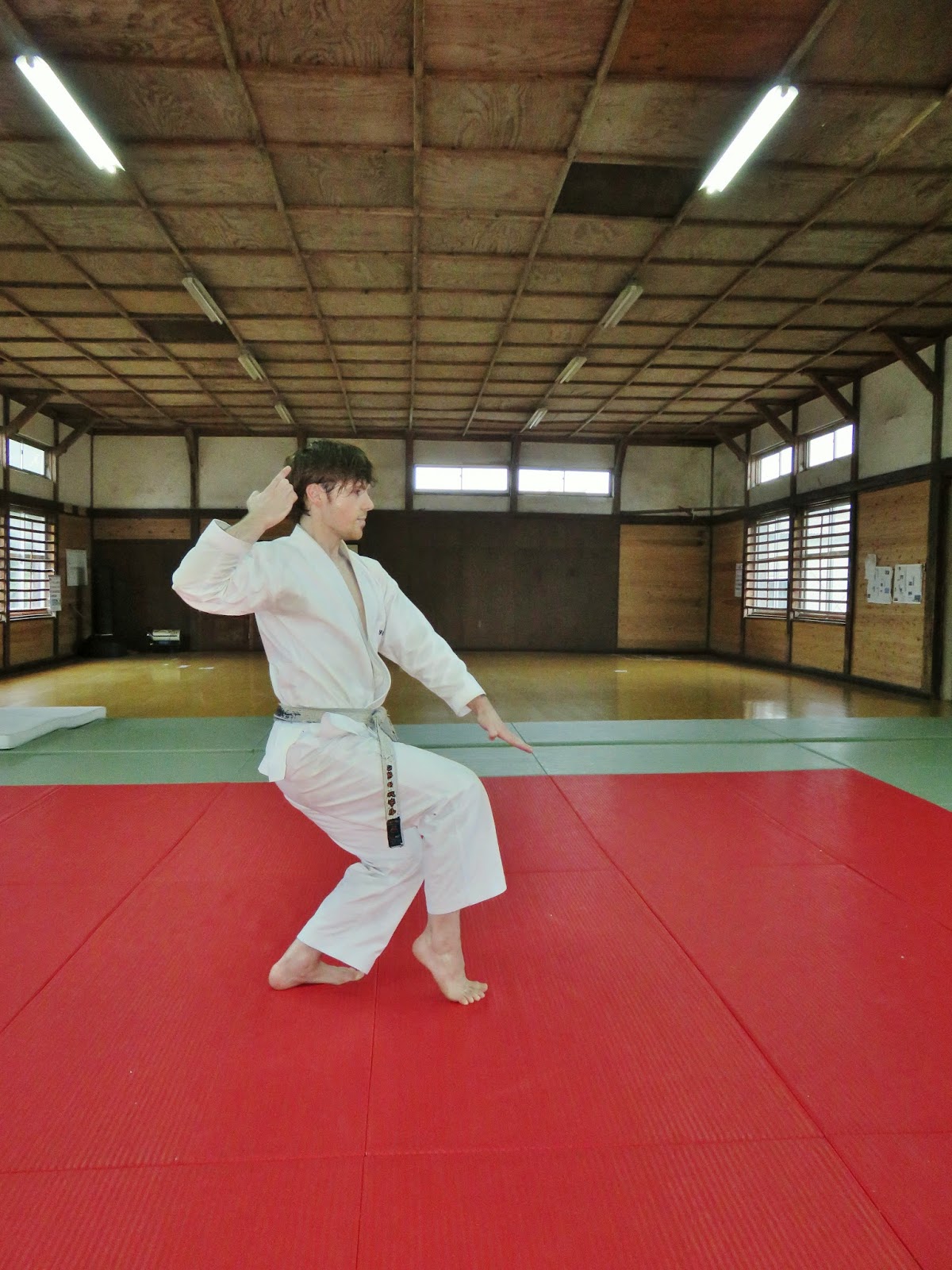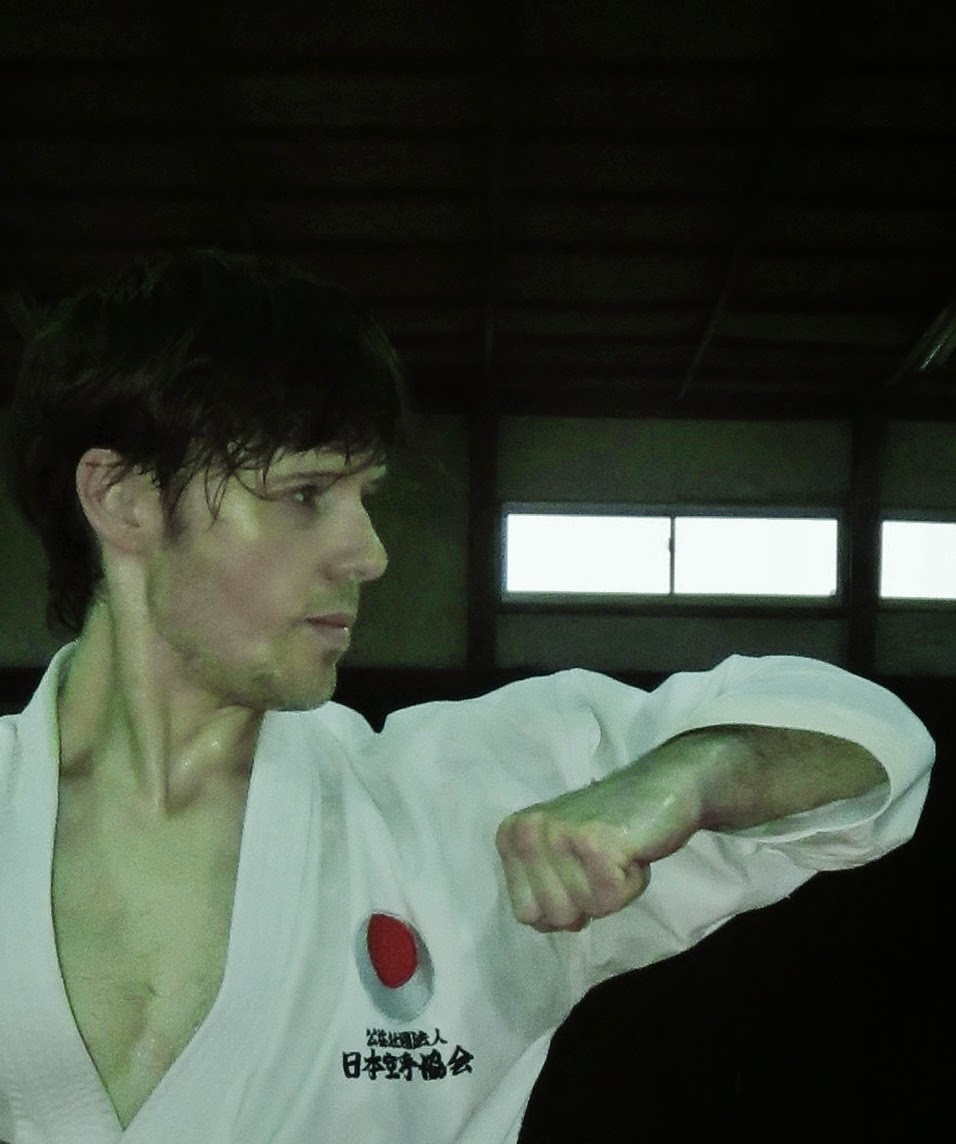Over the last week I have had to train lightly in order to recover from
my injury. In saying that (and in line with my last article `Turning negatives
into positives’: http://andrebertel.blogspot.jp/2014/07/turning-negatives-into-positives.html),
I’d like to emphasise that “…an extended period of light training can periodically
be highly beneficial”. Furthermore, light training is not necessarily `easy
training’! On the contrary, it can still be made `very difficult’. For example,
light training can be more endurance focused i.e. – distance or uphill jogging
as opposed to doing wind sprints; isometric based exercises as opposed to doing
plyometrics, etcetera. Needless to say, light training is probably the best way
to acutely concentrate on exact form (the “A’s, B’s and C’s” of every movement
in karate-do) without `being distracted’ by speed and power.
 Light training
doesn’t automatically mean `easy training’: By and large, when we try
sitting in a proper neko ashi dachi for ten minutes each side our comprehension
of `light training’ becomes a little different… Of course, this is just one
example. I guess my point here is that “…no matter what condition we are in, we
can still practice karate-do”. All we ever need is: (a) the will to practice;
(b) the determination to continue; (c) common sense (especially pertaining ‘to
not injuring ourselves’ or, like in my present situation, doing things that
make existing ailments get worse); and (d) perhaps a little creativity (in formulating
a self-appropriate training regime, drills
and/or exercises) to achieve this.
Light training
doesn’t automatically mean `easy training’: By and large, when we try
sitting in a proper neko ashi dachi for ten minutes each side our comprehension
of `light training’ becomes a little different… Of course, this is just one
example. I guess my point here is that “…no matter what condition we are in, we
can still practice karate-do”. All we ever need is: (a) the will to practice;
(b) the determination to continue; (c) common sense (especially pertaining ‘to
not injuring ourselves’ or, like in my present situation, doing things that
make existing ailments get worse); and (d) perhaps a little creativity (in formulating
a self-appropriate training regime, drills
and/or exercises) to achieve this.  One more thing, which I have failed to add is, “the need to
have good communication with your Sensei and/or training partners”. Essentially,
this relates to being able to participate in group trainings without doing
anything harmful to your body. This also requires self-discipline… Ironically, “the
first thing that most karateka want to do—is `what they are not supposed to/should
not do’”! For example, if they have a strained hamstring the first thing they
want to do is kick jodan; if they
have a broken wrist, the first thing they want to do is punch the makiwara; and
so forth… I assume that this phenomenon is probably human nature `with a light
echo of Looney Tunes playing in the background’.
One more thing, which I have failed to add is, “the need to
have good communication with your Sensei and/or training partners”. Essentially,
this relates to being able to participate in group trainings without doing
anything harmful to your body. This also requires self-discipline… Ironically, “the
first thing that most karateka want to do—is `what they are not supposed to/should
not do’”! For example, if they have a strained hamstring the first thing they
want to do is kick jodan; if they
have a broken wrist, the first thing they want to do is punch the makiwara; and
so forth… I assume that this phenomenon is probably human nature `with a light
echo of Looney Tunes playing in the background’. Anyway, today after eight days of being injured, including my worst
Unsu/kata ever in a tournament last Saturday (due to being in a lot of pain and
literally being unable to move) I finally trained a little more freely this
evening. I could actually kick with full range of motion and did not need to
tense-up/shorten my movements: to protect my injury. Step-by-step! I would like
to wrap up by thanking everyone for their support. I am very sorry to Nakamura
Shihan and JKA Kumamoto that I performed so poorly in the kata (at the JKA Kyushu
Championship), but I promise to make up for it. Lesson learned for overtraining
in the week prior to the tournament.
Anyway, today after eight days of being injured, including my worst
Unsu/kata ever in a tournament last Saturday (due to being in a lot of pain and
literally being unable to move) I finally trained a little more freely this
evening. I could actually kick with full range of motion and did not need to
tense-up/shorten my movements: to protect my injury. Step-by-step! I would like
to wrap up by thanking everyone for their support. I am very sorry to Nakamura
Shihan and JKA Kumamoto that I performed so poorly in the kata (at the JKA Kyushu
Championship), but I promise to make up for it. Lesson learned for overtraining
in the week prior to the tournament.
That being said, “light training” has helped me to recover, whilst
physically pushing me in other ways. All the best from Kumamoto, Japan. OSU, André.
© André Bertel.
Aso-shi, Kumamoto. Japan (2014).

No comments:
Post a Comment